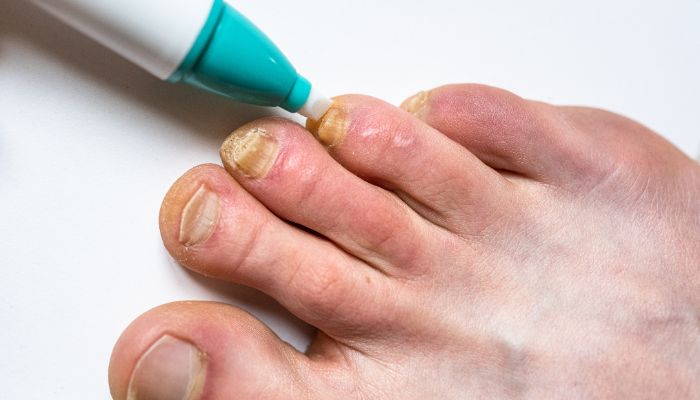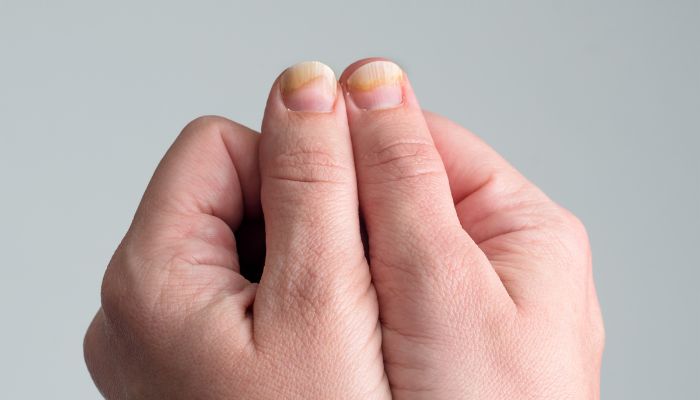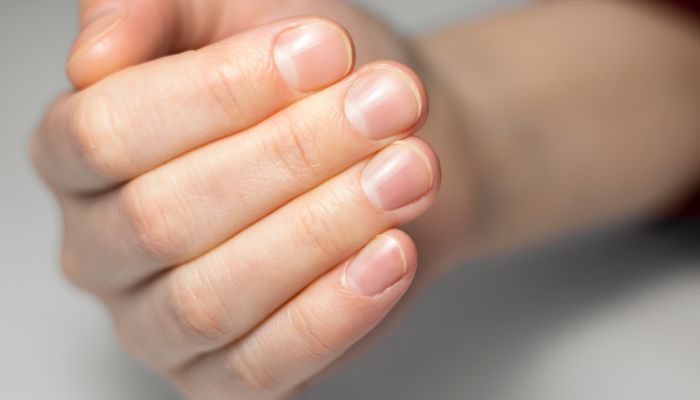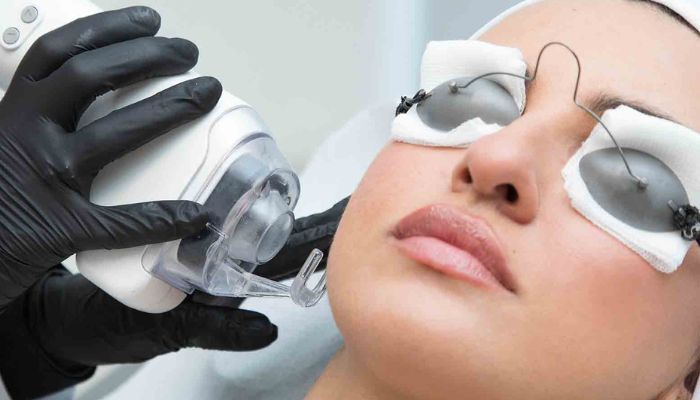Nail fungus, also known as onychomycosis, is a common condition that affects millions of people worldwide. It can be more than just a cosmetic concern—it may indicate underlying health issues and can cause significant discomfort if left untreated. Knowing how to spot the signs of a fungal nail infection early is essential for effective treatment and prevention of further complications.
In this article, we’ll dive deep into what nail fungus is, how it develops, the common signs to watch for, risk factors, how to differentiate fungal infections from other nail conditions, and what treatment options are available.
Table of Contents
What Is Nail Fungus?
Nail fungus is an infection caused by fungi, typically dermatophytes, that invade the nail plate and the tissue underneath the nail (the nail bed). This condition most commonly affects toenails but can also develop in fingernails. The fungi thrive in warm, moist environments, making feet particularly susceptible, especially for people who wear tight shoes or frequent public swimming pools, locker rooms, or gyms.
Though nail fungus is not life-threatening, it can cause discomfort, lead to more serious complications, and be a source of embarrassment for many individuals.
What Causes Nail Fungus?
Nail fungal infections are typically caused by three types of fungi:
Dermatophytes – The most common type of fungus responsible for nail infections. These fungi feed on keratin, a protein in the skin, hair, and nails.
Yeasts – In particular, Candida species can infect the nails, often as a secondary infection.
Non-dermatophyte molds – These fungi are less common and can occur in more severe cases, particularly in individuals with compromised immune systems.
Who Is at Risk for Nail Fungus?
While anyone can develop a fungal nail infection, some people are at higher risk than others. The following factors can increase the likelihood of getting nail fungus:
Age: Older adults are more susceptible due to decreased blood circulation, longer nail exposure to fungi, and slower nail growth.
Sweaty feet: Constant exposure to moisture creates a breeding ground for fungal infections.
Walking barefoot in public areas: Locker rooms, public showers, and pools are common places where fungal spores thrive.
Tight-fitting shoes: Shoes that do not allow airflow can trap moisture and heat, promoting fungal growth.
Athlete’s foot: This condition often spreads to the toenails, leading to infection.
Weakened immune system: Individuals with compromised immune function (such as those with diabetes, or those on immunosuppressive medications) are more vulnerable to infections.
Nail injuries: Trauma to the nail can provide an entry point for fungal spores.
Poor foot hygiene: Not keeping feet clean and dry increases the chances of infection.

Signs and Symptoms of Nail Fungus
Discoloration of the Nail
One of the earliest signs of nail fungus is a change in the nail’s color. Initially, you may notice a white or yellow spot under the tip of the nail. As the infection progresses, the discoloration can spread, and the nail may turn yellow, brown, green, or even black.
Thickened Nails
Nail fungus often causes the nails to thicken over time. This thickening can make the nails difficult to trim and may cause discomfort when wearing shoes or walking. Thickened nails are one of the most common symptoms of advanced fungal infections.
Brittle or Crumbly Nails
Fungal infections can make nails brittle and prone to breaking or crumbling. As the fungus grows and invades the nail, it compromises its structural integrity. You may notice that your nails break more easily, and they may have a ragged or jagged appearance.
Distorted Nail Shape
As the fungal infection progresses, the shape of the nail may become distorted. The nail may become misshapen, and in severe cases, it may begin to lift from the nail bed. This can cause discomfort and even pain in some cases.
Foul Odor
In some cases, fungal nail infections can produce a foul odor. This smell is due to the decomposition of keratin by the fungi. While not always present, a noticeable odor coming from the nails is a red flag that should not be ignored.
Separation of the Nail from the Nail Bed
Onycholysis, or separation of the nail from the nail bed, can occur in cases of fungal nail infections. This condition often results in pain and discomfort. The separation creates an open space under the nail, providing an ideal environment for further fungal growth.
Pain or Discomfort
While nail fungus is often painless in its early stages, advanced infections can cause significant pain and discomfort. This is particularly true when the nails become thickened, making it difficult to wear shoes or perform regular activities comfortably.
Diagnosis of Nail Fungus
If you suspect a fungal nail infection, it’s important to visit a healthcare professional for an accurate diagnosis. Your doctor may take a sample of the affected nail, which is then examined under a microscope to confirm the presence of fungi and identify the specific type. In some cases, a culture test may be done to determine the exact species causing the infection, aiding in more targeted treatment. Another common diagnostic method is the potassium hydroxide (KOH) test, where a small piece of the nail is treated with KOH to dissolve keratin and reveal fungal elements more clearly under the microscope.

Treatment Options for Nail Fungus
Topical Antifungal Medications
Over-the-counter (OTC) and prescription topical antifungal treatments, such as creams, gels, or medicated nail lacquers, are often the first line of defense for mild to moderate fungal infections. These medications are applied directly to the infected nail and surrounding skin. However, they may take several months to show results and may not penetrate deeply enough to treat severe infections.
Oral Antifungal Medications
In more severe cases, oral antifungal medications may be prescribed. These medications work by killing the fungus internally, and they tend to be more effective than topical treatments.
Laser Treatment
Laser therapy is an innovative and increasingly popular option for treating nail fungus. It works by directing concentrated light beams at the infected nail, effectively destroying the fungus while leaving the surrounding tissue unharmed. This non-invasive treatment is particularly appealing because it offers promising results with minimal discomfort. Although multiple sessions are often required, laser therapy has shown significant success in eliminating fungal infections and restoring healthy nail growth.
Nail Removal
In extreme cases, when the nail is severely damaged or causing significant discomfort, partial or complete nail removal may be necessary. The nail can be removed surgically or with the use of chemicals, allowing a new, healthy nail to grow in its place.
Preventing Nail Fungus
Preventing nail fungus involves maintaining good hygiene and taking proactive steps to reduce exposure to fungi. Keep your nails clean and dry, and trim them straight across to prevent breakage or injury. Avoid walking barefoot in communal areas like pools, locker rooms, and showers, where fungi thrive. Wear breathable, well-fitting shoes and moisture-wicking socks to keep your feet dry. Change your socks regularly, and if you have sweaty feet, consider using antifungal powders. Additionally, avoid sharing personal items like nail clippers or shoes, and ensure that nail salons use sterilized tools to minimize the risk of infection.
Conclusion
Recognizing the signs of nail fungus early is key to preventing the infection from worsening and spreading. From discoloration and thickening of the nails to brittleness, discomfort, and even separation from the nail bed, these symptoms should not be ignored. If you suspect a fungal infection, seeking professional diagnosis and treatment is crucial for effectively managing the condition. With options ranging from topical and oral medications to innovative treatments like laser therapy, timely intervention can restore the health and appearance of your nails. Additionally, practicing good hygiene and adopting preventive measures will help reduce the likelihood of future infections. By being proactive and informed, you can safeguard your nail health and prevent the long-term effects of fungal infections.



